You will find a kaleidoscope of unique and unusual things to do in Spain. Enjoy this inside guide to the country’s most secret spots and escape the tourist crowds.
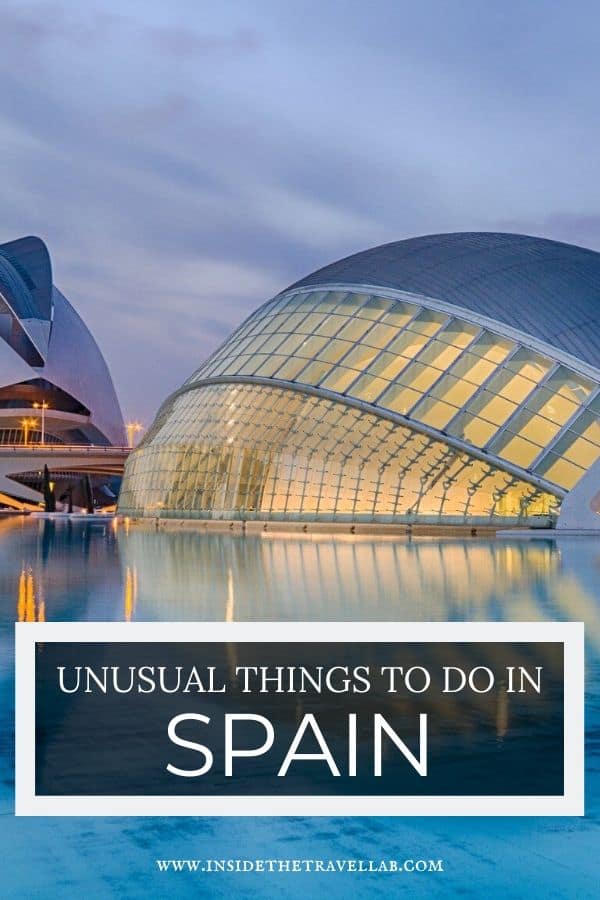
The Best Unusual Things To Do in Spain
Sun, sea, sand, plus a dazzling array of unusual things to do. That’s Spain for you.
On the one hand, you can embrace her world famous paella, flamenco and convivial, tasty tapas. On the other, you can shoot down ski slopes, forest bathe in UNESCO biospheres and snack on seafood that looks like dinosaur claws.
Every country is misunderstood to one degree or another. But I still remember my surprise on arrival at how vast and culturally rich the country was – and how the beaches were the least of it.
Well, this is but one effort to share the secret that is Spain.
Without further ado, let me introduce you to an inside collection of unique and unusual things to do in Spain…
- You might also enjoy this collection of interesting and fun facts about Spain.
Disclosure – For some of these things to do I had assistance from the local tourist boards, for others I organised them myself. Regardless of the nuts and bolts and who did what where when and why, I always keep the right to write what I like. So, this list of unusual and unique things to do in Spain comes fresh from my delectable memory and experience of living in and travelling through the country and nothing more. Enjoy and viva Espana!
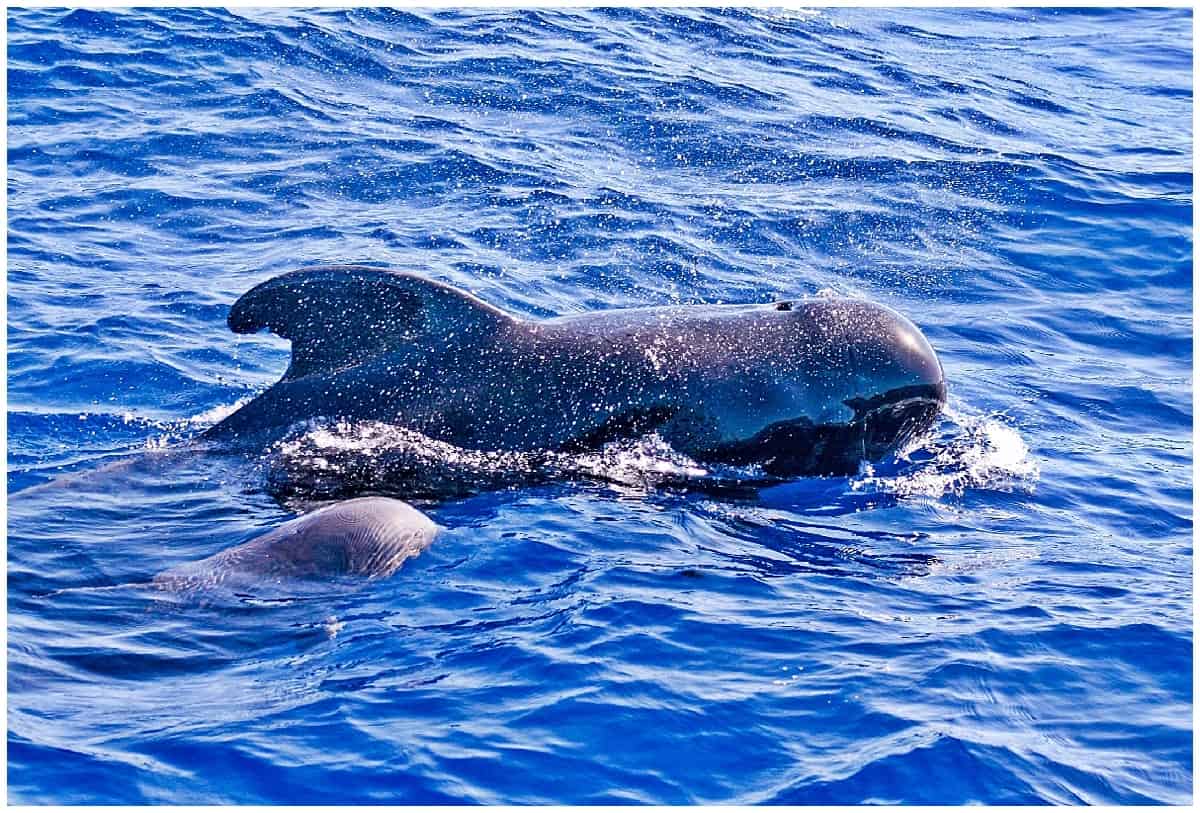
Go Whale Watching and Bathe on Black Sand
Tenerife, indeed perhaps all the Canary Islands, are almost criminally underrated. True, some resorts serve up the standard stereotype of awful Brits abroad, but that’s not the whole story. Flung off the coast of Africa, these volcanic islands give out an intoxicating Caribbean-African vibe, with quiet black sand beaches, mountains, mysterious pyramids and more.
Head to Los Gigantes and hop on a whale-watching boat and whip along the waves.
Sunbathe on black sand and then spend the night in the beautiful city of La Laguna, which is yet another UNESCO World Heritage Site.
Got some more time on your hands? Don’t miss our guide to unusual things to do in Tenerife.
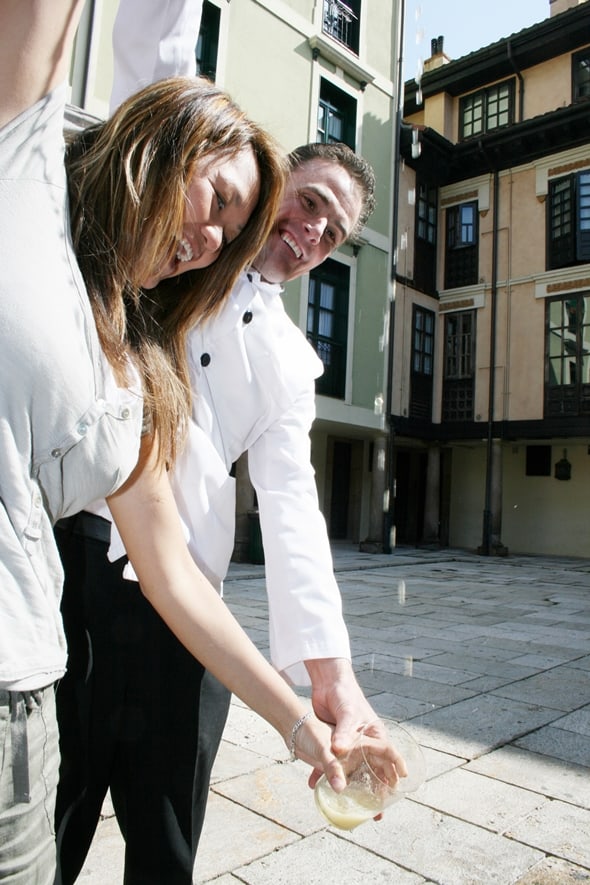
Pour Cider From A Great Height
Ready to test out your hand-eye coordination, throwing a dash of alcohol into the mix to complicate matters further? Travel to northern Asturias where the cider houses (sidrerias) give lessons in how to respect this appley beverage.
You can dine in cider barrels and visit cider farms but the real test of any visit is to see whether you can pour the frothy drink yourself.
You can read more about the secret behind Asturian cider here.
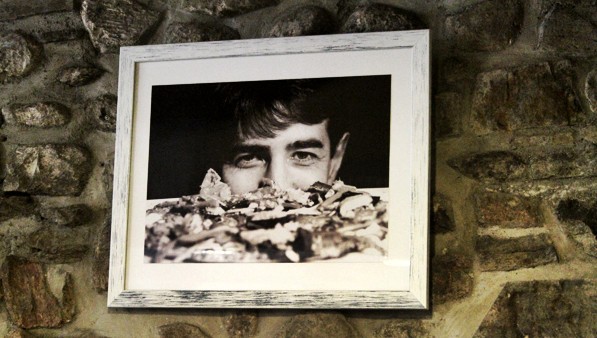
Visit the World’s Most Unusual Pizzeria
Yes, I’ll stop you right there. You’re right, of course. Pizza is not Spanish.
Pizza hails from Italy. Chaotic Naples in fact.
But travel to the tiny village of Llívia in Cerdanya in northern Spain to find the man who makes pizza cocktails, pizza sushi and, well, just plain pizza.
Not only does the life story of Fabian Martin, a former boxer, add a taste of unusual into the mix, but the village of Llívia is a part of Spain entirely surrounded by France.
If only other parts of the world could resolve such border disputes so elegantly.
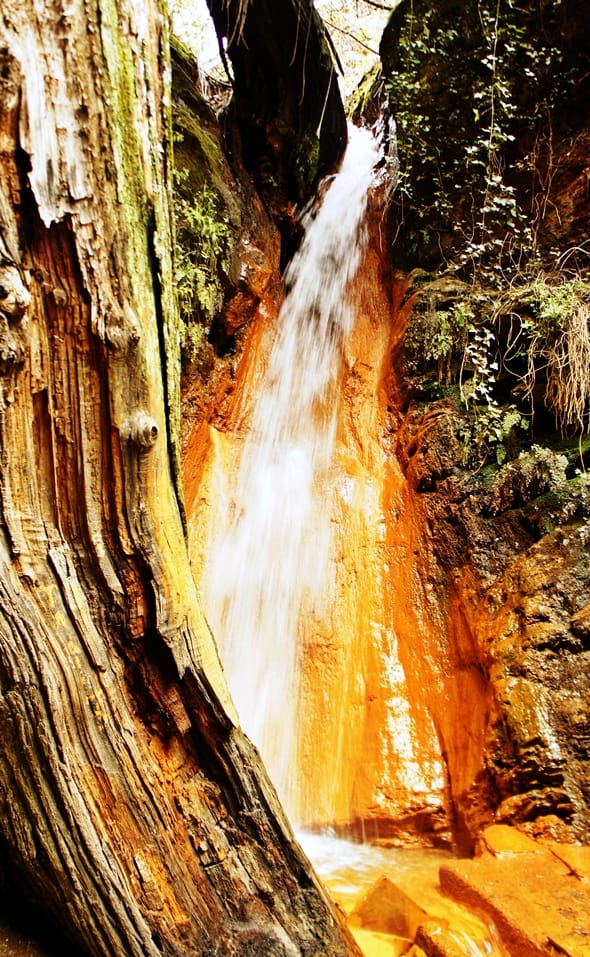
Find A River of Gold in Alpujarras
Well, OK, so it isn’t really gold it just looks like gold. But don’t let the chemistry bog you down: the fuente agria shimmers as it flows amid scented almond trees and snow-tipped peaks.
A trip to the Alpujarras mountains fits nicely on to any itinerary that takes you to the nearby Alhambra: the most famous site in Andalucia.
See our road trip itinerary through southern Spain here.
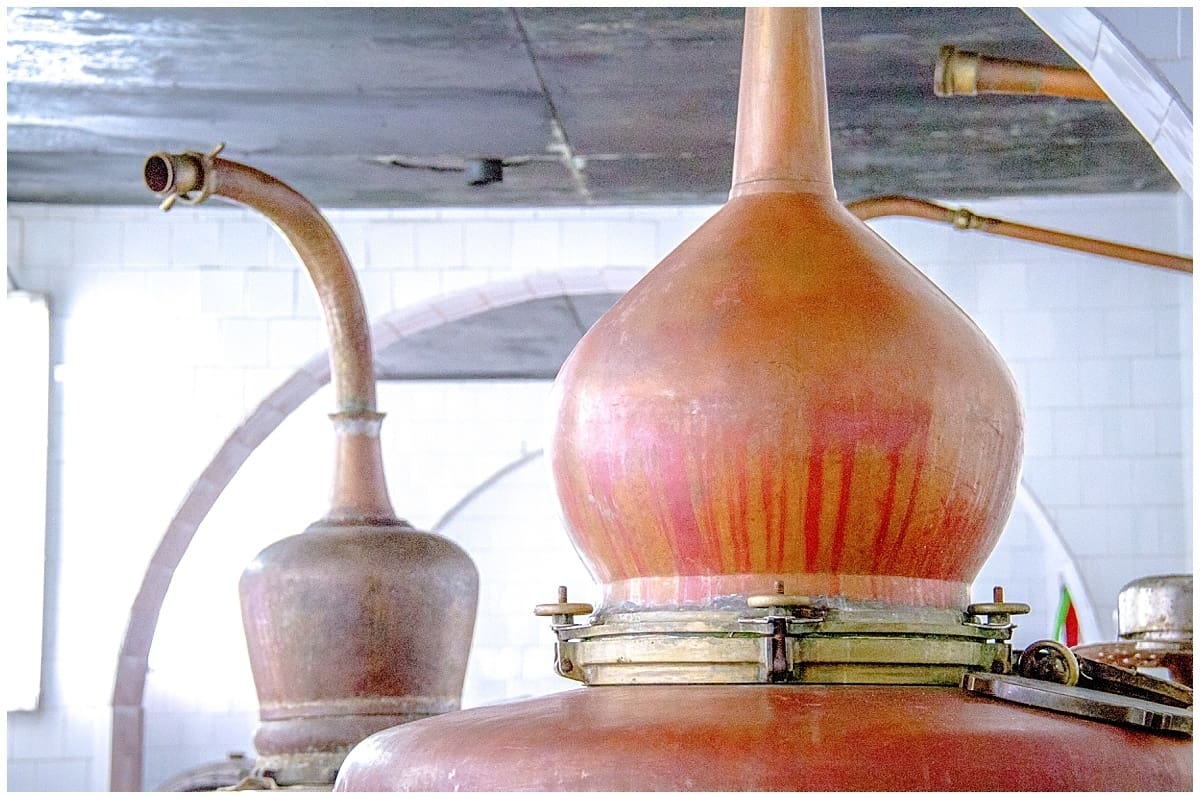
Sip Gin in the Balearics
Yes, it surprised me too, but Menorca has a history with gin. Apparently, the drink arrived here during some sailor-type British occupation and the locals took the parts they liked and improved on the rest.
The Xoriguer gin distillery overlooks the harbour in Mahon and offers a dash of history amid the baskets of juniper berries, bulbous bronzed equipment and connoisseur’s collection of gin.
Search For Golden Letters in Madrid
Madrid’s literary quarter earns its name thanks to two of the greatest and most influential writers of all time: playwright Lope de Vega and Cervantes, author of the world’s first novel, Don Quixote.
A visit to the literary quarter in Madrid is fun for its tapas and cerveza bars. But you can also add it to your collection of unusual things to do in Spain by seeking out the golden letters that shimmer across the streets.

Eat Churros in the Name of Research
And while we’re on the subject of turning earthly pleasures into cultural experiences, Madrid has something else to offer: the oldest chocolatería in the city.
Forget the soggy and flaccid fare you may have found elsewhere. Served piping hot and crunchy, churros and chocolate done right is one of the best things to do in Spain.
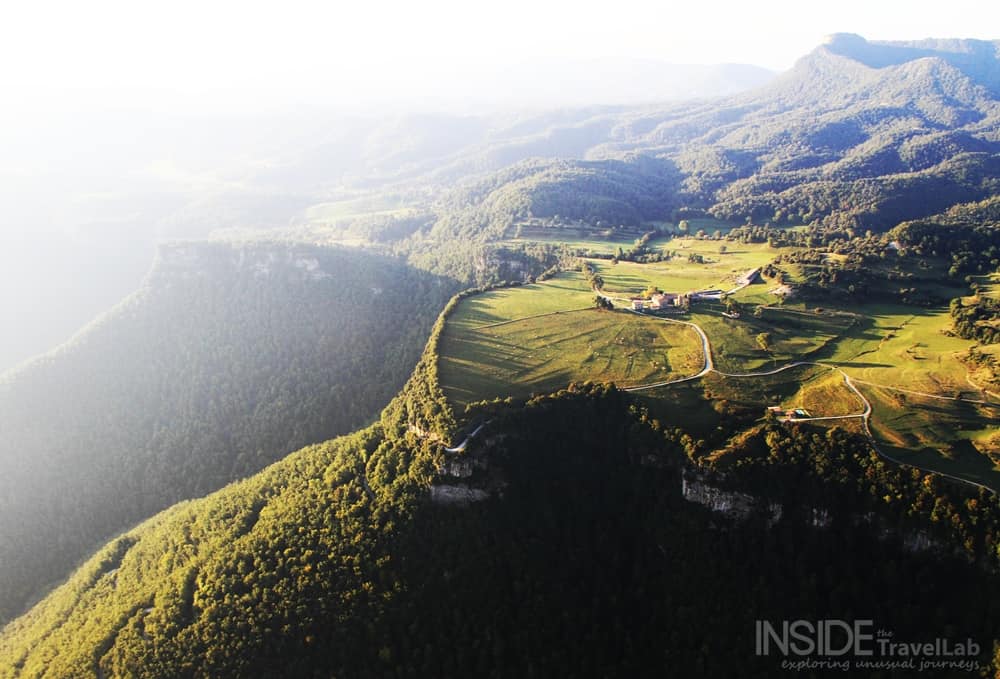
Glide Over the Mountains and Sea At the Same Time
There aren’t many places in the world where you can ski in the morning and lie on the beach by the afternoon. There are even fewer where you can take to the skies in a hot air balloon and see both the sparkle of the snow and glitter of the coast at the same time. Costa Brava is one such place.
What’s it like to go on a hot air balloon ride? It’s one of the dreamiest and most unusual thing to do in Spain.
Sleep in A Castle and A Royal Palace
Who doesn’t want to live like a king? Well, you know, with all the good bits like living in luxury and having staff wait on you and none of the having to ride a horse into battle and marry your cousin side of things.
The Parador system in Spain converts palaces and castles into hotels – and the involvement of the state makes them relatively affordable. You’ll find them across Spain but one of my favourites lives well and truly off the beaten path in an intriguing place called Zafra.
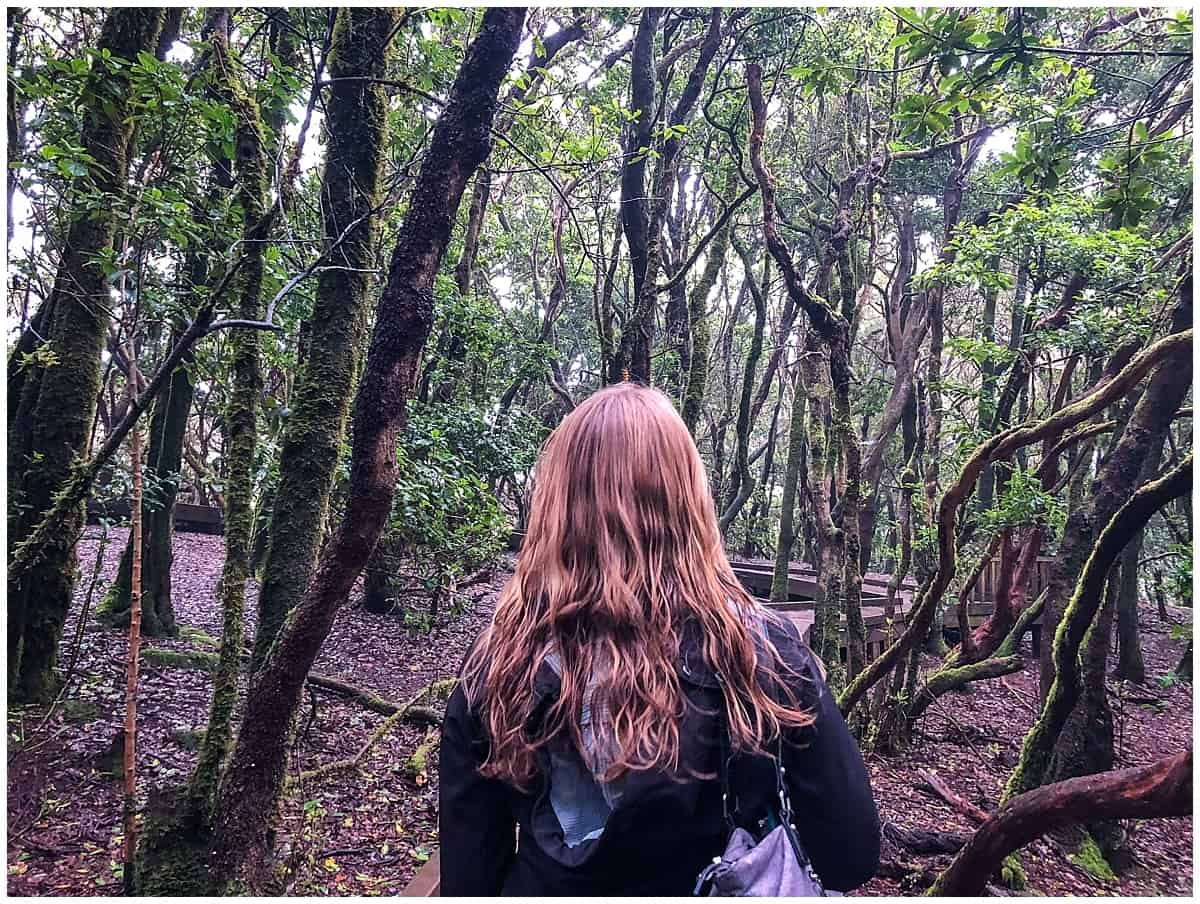
Stride Through UNESCO Biosphere Reserves
Step back in time, seven or nine million years or so, to the incredible Macizo de Anaga in the UNESCO Biosphere Reserve in Tenerife. This mind-blowing hiking destination lies only a short drive away from two other UNESCO World Heritage Sites yet still most of us think of Tenerife as only a cheap sun and sangria kind of place.
Add it to your list of unusual and unique things to do in Spain right now!
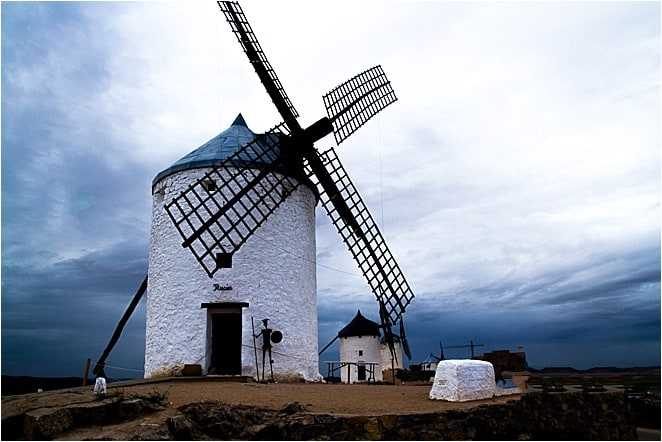
Tilt at Don Quixote Windmills
Yep, the windmills that featured in Don Quixote are real and you can see them in La Mancha. If you’re lucky, you may run into the man himself, and his sidekick Sancho.
Visit as a day trip from Madrid or rent a car and spend a weekend in and around Toledo in Castilla La Mancha.
Decipher Drain Covers
Artists never miss a trick when it comes to old Spanish cities. In Seville, look at the underside of balconies to see patterns more ornate than I have in my entire house.
And in the drain covers, seek the hidden meaning of NO8DO.
Join an Olive Oil Harvest
It may be a cliche to describe olive oil as liquid gold but on the rolling groves of Andalusia in southern Spain, the meaning becomes more clear. This region alone is one of the world’s biggest producers of the peppery-green stuff, yet family plots survive alongside the big business.
Head into the scorched earth with a rake and a broom and join a traditional olive oil harvest. Then head further into the Sierra Nevada to hike and, in winter, ski.

Skate Along A Riverbed
Riverbed in your way when it comes to ambitious town planning? Simply reroute it and allow residents to skate, run and segway along the groove instead.
That’s what happened in Valencia and this green stretch runs from the heart of the city right to the dazzling sharp white City of Arts and Sciences. Part museum, part architectural masterpiece, it’s one of the most beautiful and unusual things to do in Spain you can find.
Spot the Frog For Good Luck
The Spanish city of Salamanca impresses visitors with ornate cathedrals and one heck of an aqueduct. But it’s the game of “spot the frog” that lands the city on this list of unusual things to do in Spain.
See if you can find the frog in Salamanca and unearth what happens if you do.

Climb the World’s Oldest Lighthouse in Continuous Use
Yes, it’s another UNESCO World Heritage Site in Spain. There are so many, it hardly seems fair. The Tower of Hercules dates back to Roman times in the salty northern land of Galicia.
Galicia is also awash with lighthouses, rocky cliffs and sandy coasts, should you fancy extending one visit into a road trip.
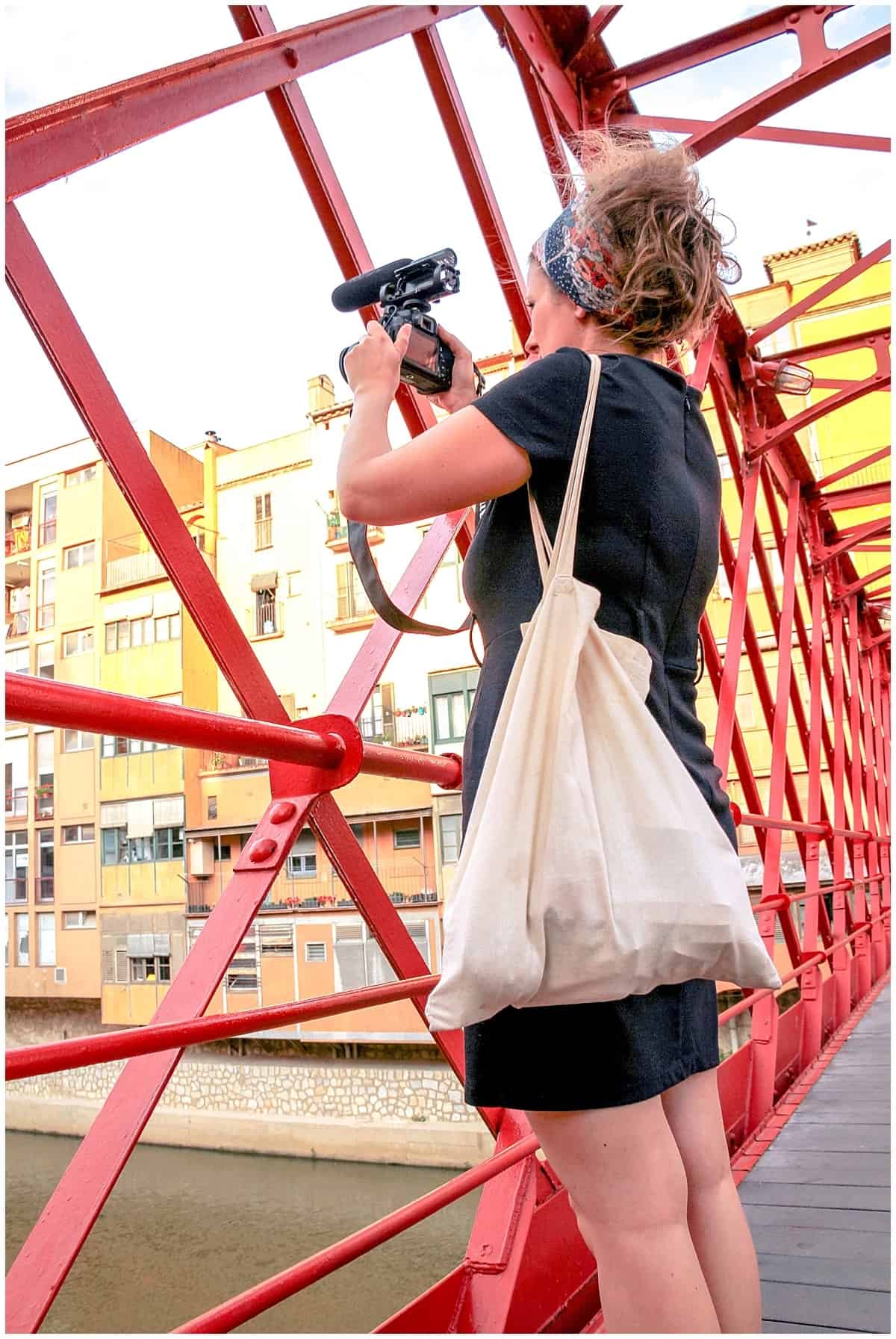
See the Eiffel Bridge Instead of Tower
Turns out, Eiffel had more than one iron in the fire. Head to the gorgeous ochre and burnt red medieval centre of Girona to find the Eiffel Bridge. While you’re there, tuck into some of the best food in the world (not an exaggeration, the El Cellar de Can Roca really does win those kind of accolades year after year after year.)
Play the Bagpipes
Ach, and you thought they were just for Scotland?! Not at all! Bagpipes mark another tradition in the northern stretch of Spain known as Asturias. Amid frothing cider, national parks, stone town centres and more apples than you know what to do with, you’ll find bagpipe displays as well in almost every small town.

See These Hoods Differently
This is NOT the Ku Klux Klan, nor anything to do with it.
For centuries, religious orders in Andalusia have worn costumes like these for Semana Santa or Holy Week. Even today, processions take place all day and all night for Semana Santa through the narrow streets of Seville.
It’s a scary sight. But it shouldn’t be. It has nothing to do with the murderous movement in the US.
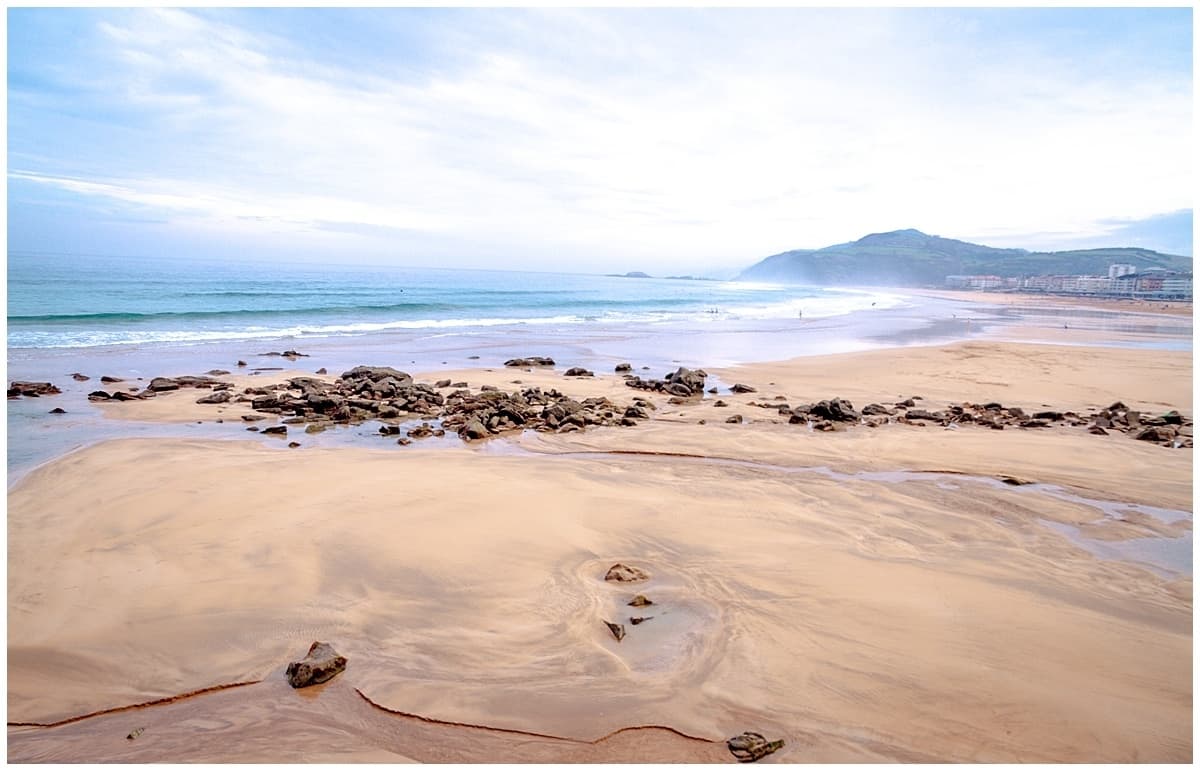
Taste Basque Culture
San Sebastian, if it is known at all, generally picks up fame for its tasty tapas scene and proximity to Bilbao and the silver curls and swirls of the Guggenheim Museum.
Yet it’s the beating cultural heart of the Basque country, a land that spills over the border into France, with its own ultra-distinct language (don’t let the “X” trip you up,) peppery culture and cuisine.
Discover the success of local boy Balenciaga, pit your wits against the froth-topped surf along the sand-and-stone coast and stroll through the Old Town on a Sunday afternoon to see Basque berets and banter in full and friendly style.
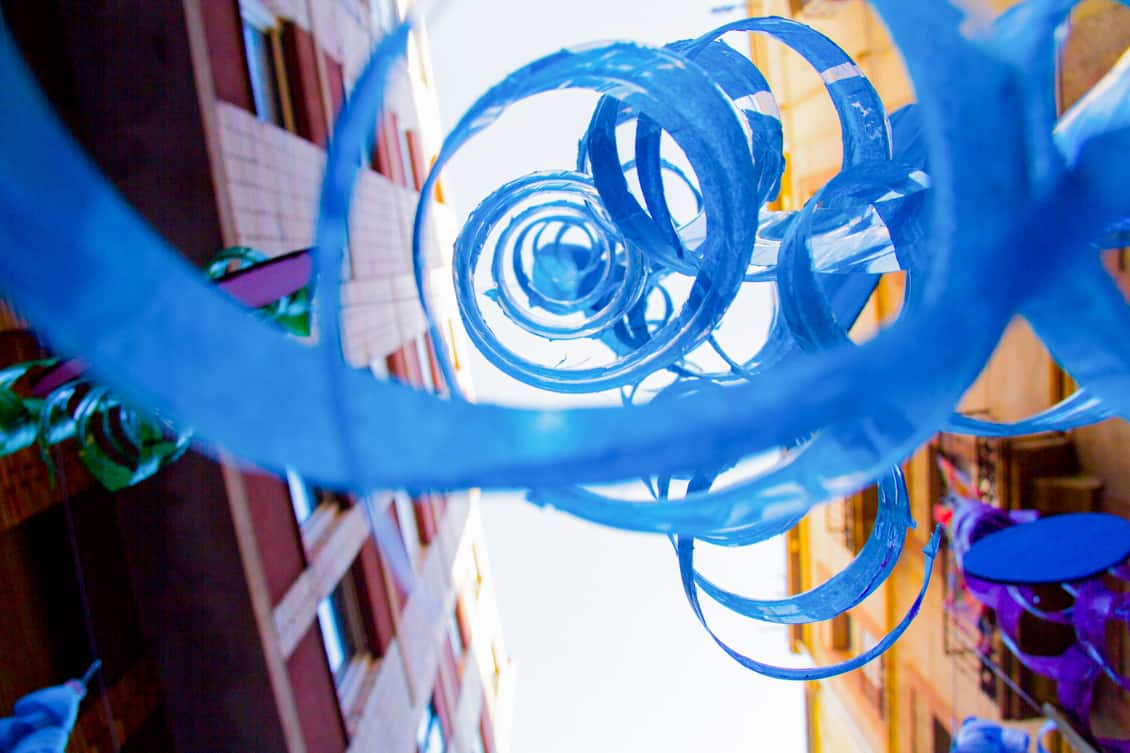
Embrace Spain’s Unusual Festivals
The rumours are true. Spain has more public holidays than there are days of the year – and they put their creativity to work when it comes to creating festivals.
I’ve heard rumours about the goat-throwing.
And I’ve been there for the tomato pelting.
The Tomatina is but one festival in this country but, to be honest, the Tomatina is for the young and masochistic.
Far more dignified (and fun!) is the papier mache festival held each year in Barcelona. Residents from the edgy Gracia district build colourful characters that stand two storeys high and float music and sweet treats through the narrow streets of summer.
Or, if papier mache’s not your thing, check out the flower festival in Girona.
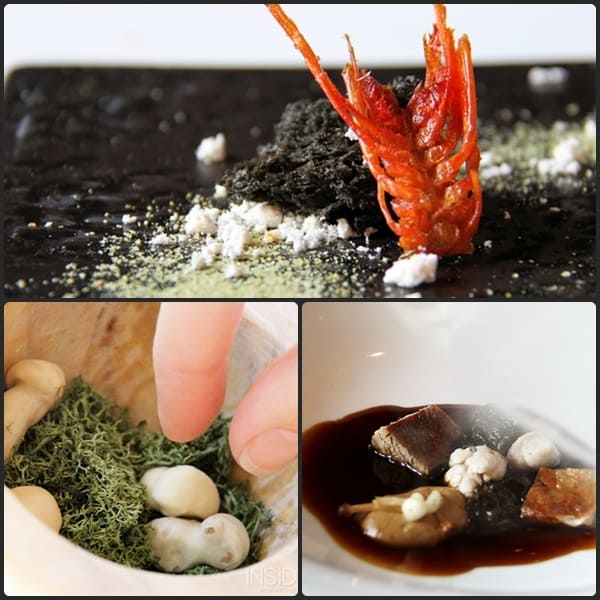
Dine at the Best Restaurant in the World (Almost)
The three brothers at El Celler de Can Roca near Girona consistently top the best foodie charts. Well, OK, they come second but the dining experience is top notch. Here’s what it’s like to eat there…
My Experience at El Celler de Can Roca
In the space of five minutes, we’ve travelled through five countries: Mexico, Peru, Lebanon, Morocco and Korea. Each stood balanced on a circle of wire; each had a shell that collapsed on the first bite. It’s a lot to take in.
Lime, miniature mint, translucent gel and the relief that I’ve passed the quiz. I don’t get to bathe in the shame of geographical culinary ignorance. At least not today.
What I do get to do is dine at El Celler de Can Roca, recently voted the second best restaurant in the world. And, while I can’t believe my luck, it’s actually my second time here.
Second is a curious word in the English language. A fleeting moment of time. A numerical order of position, inferiority often implied. Yet as a verb, second means to show agreement and support.
The Power of Three
My mind drifts towards numbers so much because El Celler de Can Roca has such an obsession with them themselves. Not with coming second, that never gets mentioned. But they certainly have a soft spot for the curvy number three.
A metallic R hangs on the weathered wooden wall that contains this restaurant. The R has three stems. Speckled rocks wait on the white tablecloths. Not two, not four, but three. The dining room is triangular. It takes three bibles to list the wine. They even have three Michelin stars (ahem.)
Despite the Spanish location, this isn’t about Catholicism and (as far as I can make out) it isn’t a numerical fetish.
It reflects the underlying principle of the place: Can Roca is run by three brothers – Joan, Josep and Jordi.
Joan handles the savoury courses, Josep takes care of the wine and Jordi is all about the dessert.
The sooner my younger brothers develop skills like that, the better.
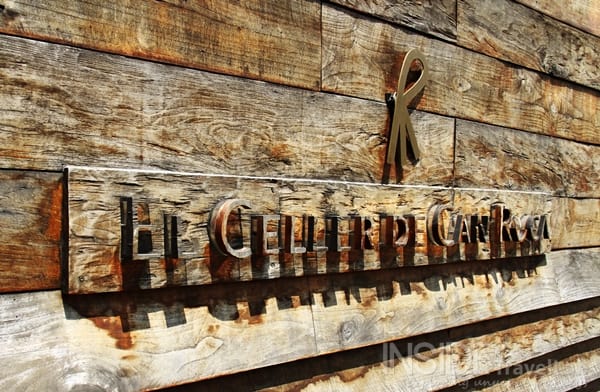
What It’s Like Inside
The restaurant itself is gloriously unpretentious. A small patio with cut grass introduces the glass walled reception and restaurant. Guests frequently get to see the kitchen and wine cellar. As press, of course, I get a few extra privileges. The chance to look like a professional, I suppose, instead of a raving fan or stalker as I trail these three men with a lens and ask them to step into the light.
The kitchen, like the chefs, is ready for its photoshoot. Surfaces gleam. Brows look furrowed, but not too much. Chalk scribbles across the blackboard and the flames burn dutifully behind black, rectangular ovens. The air fills with the sound of action but the scent of what’s cooking doesn’t suffocate the air.
Through the hum of organised activity, I catch a few surprises. Olive trees as bonsais lined up on a silver counter. Salmon-pink prawns splayed open on stacked slate. Swift fingers distributing something that looks like moss.
Ten minutes later, I see the olive trees again, glass of cava in one hand and camera, notebook and pen clumsy in the other. Caramelised olives dangle from spikes on the trees.
I try one, then two, then three. Sweet blends with bitter and I’m in danger of writing an ode to an olive, it tastes that good.
Which reminds me. For all the talk about kitchens and numbers, I haven’t yet told you about the food.
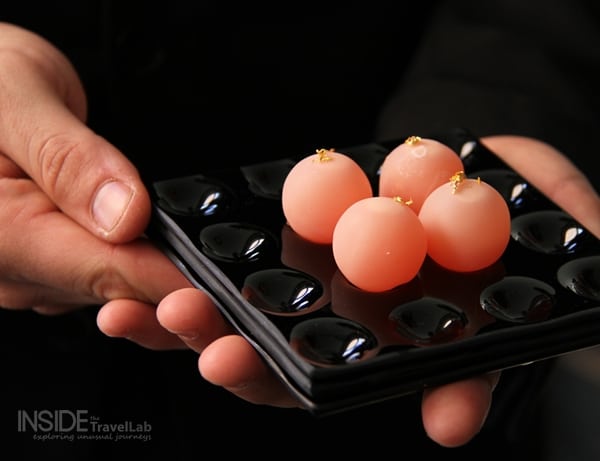
About the Food
“How many courses are there?” I ask the waitress gliding by.
She struggles for the English word but sums it up well with her answer: “Lots.”
After our geography lesson, we truly begin. I make notes, take photos and close my eyes to taste but I’m sure we hit seventeen courses, possibly twenty depending on definitions.
Our palates switch from dishes loyal to Catalonia (St George’s mushrooms appear a few times) to international affairs (curry caramelised walnuts accompany the pigeon.) And goodwill is extended towards the rest of Spain through the black olive gazpacho, Iberian suckling pig and the fino from Jerez.
In fact, goodwill seems to ooze all around. As Quim Casellas, the chef from nearby restaurant Casamar, said “Ferran’s the household name and the symbol. The glitz and the glamour. But the Rocas are like your papa. They’re like your father, your family.”
And just like your family’s cooking, there are things you don’t like. For me, the gingered cherries with smoked sardine was a step too far and while the splayed prawn displayed deconstructed drama, it didn’t suit my tastes. But enough of my words. Food like this is an art – and an art that deserves to be seen.
In Conclusion
And as for being second best? I’d like to end on a quote.
“Second place is just the first place loser.” Words from a man who died trying to win.
Three brothers, three stars, five hours and seventeen courses. I’m very happy with these numbers. And I’m more than happy with second place.
More on Travel in Spain
Check out our collection of articles on travel in Spain here. In particular, look at the road trip planner an in depth city guide on Seville and how to spend a summer in Spain.
- The Spain quiz for curious people
- 49 Interesting facts about Spain
- The ultimate Spain and Portugal itinerary planner
- Is it worth visiting Spain in winter?
- Everything you need to know about travelling solo in Spain
- How to get off the beaten track in Spain
- How to spend the perfect week in Spain
- The ultimate Spain packing list


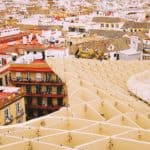


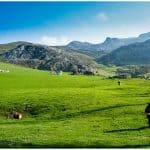
Great list! Can definitely vouch for Asturias cider pouring: they encourage it in many local bars. My dad tried and failed so many times when we were younger! I’d also recommend canoeing down the Sella river.
Thanks for the tip! And, yes. My cider-pouring skills were rather, well, hit and miss!
Great list, Aby. May I suggest Extremadura as an unusual destination to explore? It’s often overlooked by visitors and it’s probably the least popular region (a good thing!).
Yes, great suggestion and brilliantly beautiful place! I think I need to update this article and include some more places. Thanks for the reminder!
What a lovely list of unusual things! I must admit the unusual pizzeria appeals to me and I have not yet stepped foot on a black sand beach!
It’s amazing how different a black sand beach feels. The eye/mind is so easily tricked. Loved the pizzeria, too, but in part for the enthusiasm of the chef!